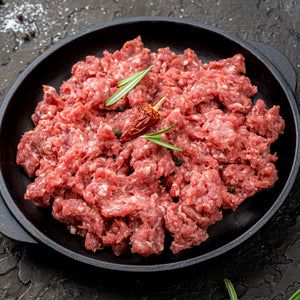Good To Know
What is Grass Fed Beef?
We all have seen pictures of cows in their small housings getting “fattened” with grain and soy. But this is obviously against the cattle’s nature. That’s why grass-fed beef got popular: the cows can walk around, rest on fields and eat grass
which is good for their diet. Those cows are often healthier and have more muscles.
Okay - but how does that influence the meat?
As mentioned, grass-fed cattle have less fat. Therefore, its meat tends to be much leaner and the fat looks kind of yellow and not white or pink. So basically it is lower fat, lower calories, lower cholesterol, and lots of Omega-3. It helps you with your diet, has a positive influence on your cholesterol level, and can even lower your neutral fat level.
If you’re on a diet, having problems with your stomach when eating fatty meat, or just want to have some high-quality healthy beef, then grass-fed beef is the answer!
Grass-fed beef is also better for you
So it is much leaner than its conventional counterpart. It's also higher in key nutrients, including antioxidants, vitamins, and a beneficial fat called conjugated linoleic acid (CLA) that's been tied to improved immunity and anti-inflammation benefits. Plus, grass-fed beef packs about 50% more omega-3 fatty acids than standard beef (although the amount is still far lower than the total omega-3s found in fatty fish like salmon). Grass-fed beef is also less likely to contain “superbugs”—bacteria that have become resistant to three or more classes of antibiotics—so it’s considered superior from a food safety perspective as well.













